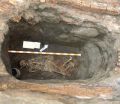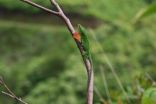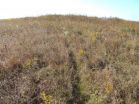(Press-News.org) A new study by UCLA scientists and colleagues adds further proof to earlier findings by Dr. Claire Lugassy and Dr. Raymond Barnhill of UCLA's Jonsson Comprehensive Cancer Center that deadly melanoma cells can spread through the body by creeping like tiny spiders along the outside of blood vessels without ever entering the bloodstream.
In addition, the new research, published March 6 in the journal Nature, demonstrates that this process is accelerated when the skin cancer cells are exposed to ultraviolet light. The husband-and-wife team of Barnhill and Lugassy collaborated on the study with a team from Germany's University of Bonn led by Dr. Thomas Tuting.
It is well known that melanoma cells from an initial tumor can travel through the bloodstream to other parts of the body, where they accumulate and form new tumors. Through such metastasis, a small skin cancer can become life-threatening by spreading to the brain, lungs, liver or other organs.
Fifteen years ago, Lugassy and Barnhill first discovered and described an alternative metastatic process, which they called extravascular migratory metastasis, or EVMM, by which melanoma cells could move along the outside, or abluminal, surface of blood vessels by way of angiotropism — a biological interaction between the cancer cells and the blood vessel cells. Since then, Lugassy and Barnhill have continued to assemble a body of scientific evidence confirming the existence of this metastatic pathway of cancer cells.
With angiotropism and EVMM, the cancer cells may replace tendril-like cells called pericytes, which are normally found on the outsides of blood vessels, through a process called pericytic mimicry. Imitating the pericytes, the melanoma cells creep along the length of blood vessels until they reach an organ or other point where they accumulate to form new tumors, "potentially explaining the delay between the detection of the primary cancer and the appearance of distant metastases," said Barnhill, a professor of pathology at UCLA.
"At first our idea was controversial," said Lugassy, a UCLA associate professor of pathology. "But mounting evidence confirming angiotropism and EVMM has revolutionized the knowledge of how cancer spreads through the body to the point that other scientists have confirmed the process in other solid-tumor cell types, such as pancreatic cancer."
In the new Nature study, EVMM was observed again by Tuting, Lugassy, Barnhill and their colleagues in a genetically engineered mouse model of melanoma. The researchers also found that the immune systems of mice exposed to ultraviolet radiation responded with inflammation that accelerated the angiotropism, increasing the level of EVMM and leading to more lung metastases than among the mice not exposed to UV light.
This study was conducted at the Laboratory for Experimental Dermatology in Bonn, under the direction of Tuting.
"We have known for a long time that UV radiation is a factor in the development of melanoma," Barnhill said, "but in this study, the melanoma was already present in the mice."
Tuting observed that UV light provoked inflammation at the site of the tumor, which caused the mouse immune system to attract a type of common white blood cells known as neutrophils. The neutrophils, in turn, promoted angiotropism.
With this new knowledge — and the confirmation of Lugassy and Barnhill's research on angiotropism and EVMM — researchers in the scientific community can now begin looking for a drug target that will interfere with this EVMM process. Because the danger of melanoma comes from its metastasis from the skin to the vital organs, being able to slow down or stop this process could turn a disease that is often a death sentence into a manageable chronic illness with relatively little risk of death.
INFORMATION:
This research was supported by the Melanoma Research Network, Jurgen Manchot Stiftung, the American Institute for Cancer Research and the Deutsche Forschungsgemeinschaft (German Research Foundation).
UCLA's Jonsson Comprehensive Cancer Center has more than 240 researchers and clinicians engaged in disease research, prevention, detection, control, treatment and education. One of the nation's largest comprehensive cancer centers, the Jonsson center is dedicated to promoting research and translating basic science into leading-edge clinical studies. In July 2013, the Jonsson Cancer Center was named among the top 12 cancer centers nationwide by U.S. News & World Report, a ranking it has held for 14 consecutive years.
For more news, visit the UCLA Newsroom and follow us on Twitter.
UV light aids cancer cells that creep along the outside of blood vessels
2014-03-10
ELSE PRESS RELEASES FROM THIS DATE:
Natural selection has altered the appearance of Europeans over the past 5,000 years
2014-03-10
There has been much research into the factors that have influenced the human genome since the end of the last Ice Age. Anthropologists at Johannes Gutenberg University Mainz (JGU) and geneticists at University College London (UCL), working in collaboration with archaeologists from Berlin and Kiev, have analyzed ancient DNA from skeletons and found that selection has had a significant effect on the human genome even in the past 5,000 years, resulting in sustained changes to the appearance of people. The results of this current research project have been published this week ...
JCI online ahead of print table of contents for March 10, 2014
2014-03-10
Identification of a broadly neutralizing HIV-1 antibody in a lupus patient
Broadly neutralizing antibodies (BnAbs) recognize conserved epitopes, representing a promising strategy for targeting rapidly mutating viruses. BnAbs display a unique set of characteristics that suggest their development may be limited by immune tolerance. Interestingly, the HIV-1 infection frequency is disproportionately low among patients with the autoimmune disease lupus. In this issue of the Journal of Clinical Investigation, Mattia Bonsignori and colleagues at Duke University identified an ...
NASA data shed new light on changing Greenland ice
2014-03-10
Research using NASA data is giving new insight into one of the processes causing Greenland's ice sheet to lose mass. A team of scientists used satellite observations and ice thickness measurements gathered by NASA's Operation IceBridge to calculate the rate at which ice flows through Greenland's glaciers into the ocean. The findings of this research give a clearer picture of how glacier flow affects the Greenland Ice Sheet and shows that this dynamic process is dominated by a small number of glaciers.
Over the past few years, Operation IceBridge measured the thickness ...
Shade will be a precious resource to lizards in a warming world
2014-03-10
Climate change may even test lizards' famous ability to tolerate and escape the heat -- making habitat protection increasingly vital -- according to a new study by UBC and international biodiversity experts.
The study, published today in the Proceedings of the National Academy of Sciences, looks at the heat and cold tolerance of 296 species of reptiles, insects and amphibians, known as ectotherms. The researchers discovered that regardless of latitude or elevation, cold-blooded animals across the world have similar heat tolerance limits. However, species in the tropics ...
A tale of 2 data sets: New DNA analysis strategy helps researchers cut through the dirt
2014-03-10
For soil microbiology, it is the best of times. While no one has undertaken an accurate census, a spoonful of soil holds hundreds of billions of microbial cells, encompassing thousands of species. "It's one of the most diverse microbial habitats on Earth, yet we know surprisingly little about the identities and functions of the microbes inhabiting soil," said Jim Tiedje, Distinguished Professor at the Center for Microbial Ecology at Michigan State University. Tiedje, along with MSU colleagues and collaborators from the U.S. Department of Energy Joint Genome Institute (DOE ...
Mecasermin (rh-IGF-1) treatment for Rett Syndrome is safe and well-tolerated
2014-03-10
(Cincinnati, OH) – The results from Boston Children's Hospital's Phase 1 human clinical trial in Rett syndrome came out today. A team of investigators successfully completed a Phase 1 clinical trial using mecasermin [recombinant human insulin-like growth factor 1 (IGF-1)], showing proof-of-principle that treatments like IGF-1 which are based on the neurobiology of Rett syndrome, are possible. The study deemed that IGF-1 is safe and well tolerated in girls diagnosed with Rett syndrome, and the data also suggests that certain breathing and behavioral symptoms associated ...
National study reveals urban lawn care habits
2014-03-10
(Millbrook, NY) What do people living in Boston, Baltimore, Miami, Minneapolis-St. Paul, Phoenix, and Los Angeles have in common? From coast to coast, prairie to desert – residential lawns reign.
But, according to a new study in the Proceedings of the National Academy of Sciences, beneath this sea of green lie unexpected differences in fertilization and irrigation practices. Understanding urban lawn care is vital to sustainability planning, more than 80% of Americans live in cities and their suburbs, and these numbers continue to grow.
The study was undertaken to ...
Lower IQ in teen years increases risk of early-onset dementia
2014-03-10
Men who at the age of 18 years have poorer cardiovascular fitness and/or a lower IQ more often suffer from dementia before the age of 60. This is shown in a recent study encompassing more than one million Swedish men.
In several extensive studies, researchers at the Sahlgrenska Academy of Gothenburg University have previously analyzed Swedish men's conscription results and were able to show a correlation between cardiovascular fitness as a teenager and health problems in later life.
Increased risk for early-onset dementia
In their latest study, based on data from 1.1 ...
Some characteristics increase the likelihood of getting married and living together
2014-03-10
CORAL GABLES, FL (March 10, 2014) -- When it comes to romantic relationships, attributes such as health, kindness, and social status have been shown to be important qualities in choosing a partner. It may be surprising to learn, however, that certain personal traits predispose a person towards either getting married or forming a cohabitating relationship.
According to a study recently published in the journal Social Science Research, scoring high on attractiveness, personality, and grooming is associated with a greater probability of entering into a marital relationship ...
A shocking diet
2014-03-10
There have been plenty of fad diets that captured the public's imagination over the years, but Harvard scientists have identified what may be the strangest of them all – sunlight and electricity.
Led by Peter Girguis, the John L. Loeb Associate Professor of the Natural Sciences, and Arpita Bose, a post-doctoral fellow in Organismic and Evolutionary Biology, a team of researchers showed that the commonly found bacterium Rhodopseudomonas palustris can use natural conductivity to pull electrons from minerals located deep in soil and sediment while remaining at the surface, ...





